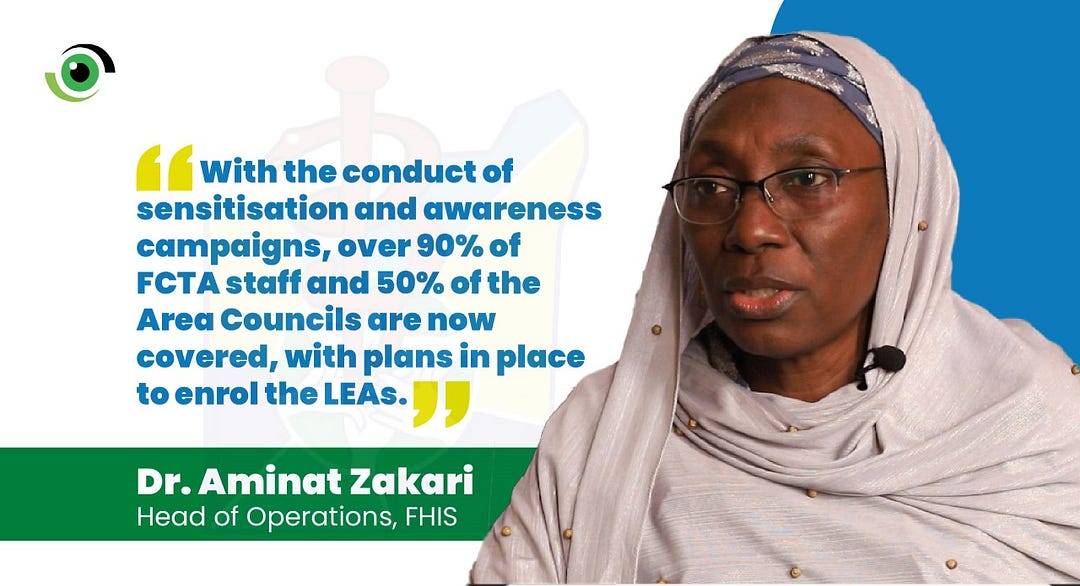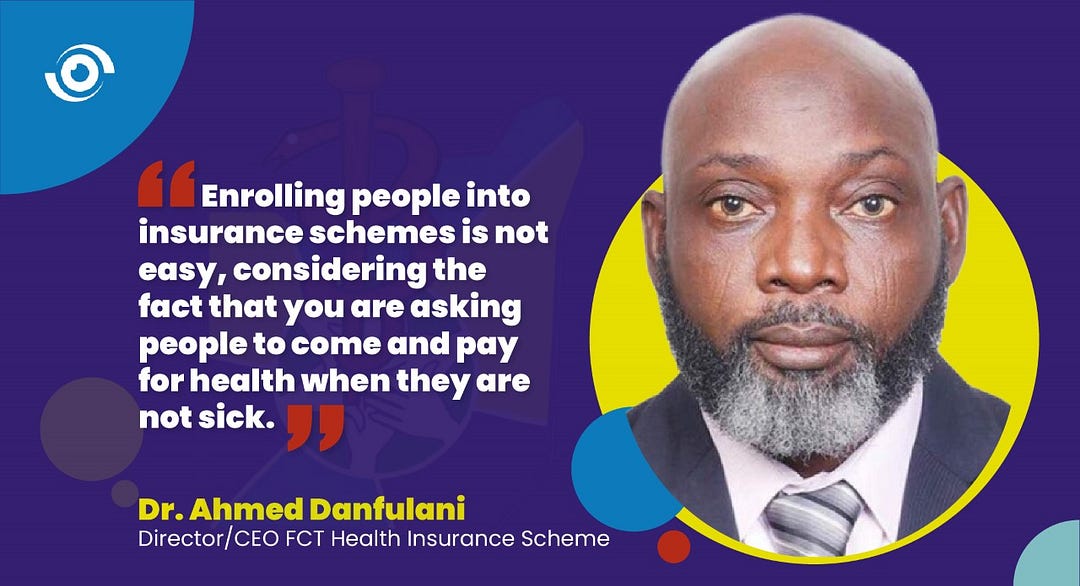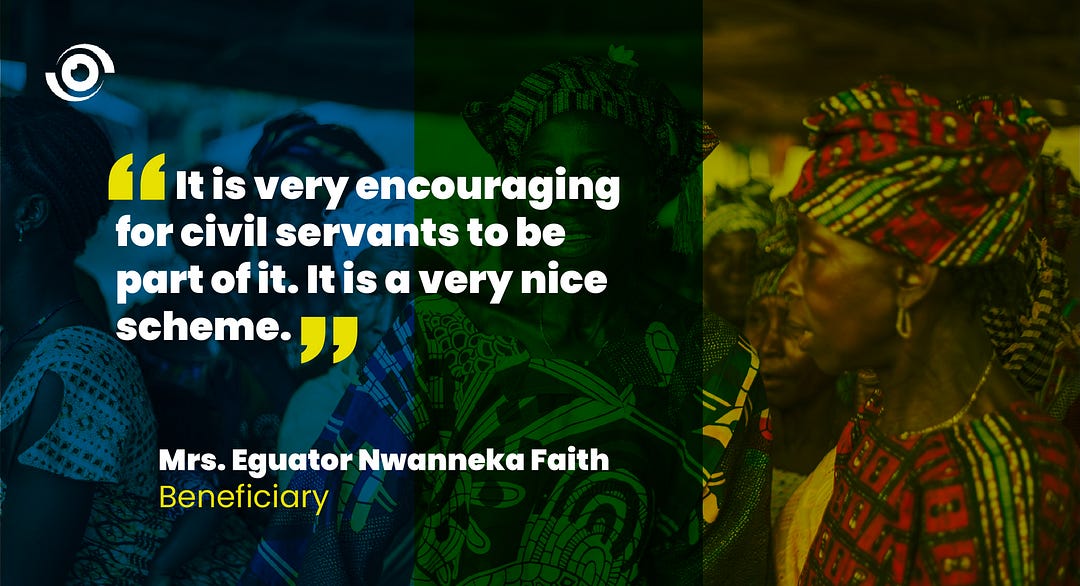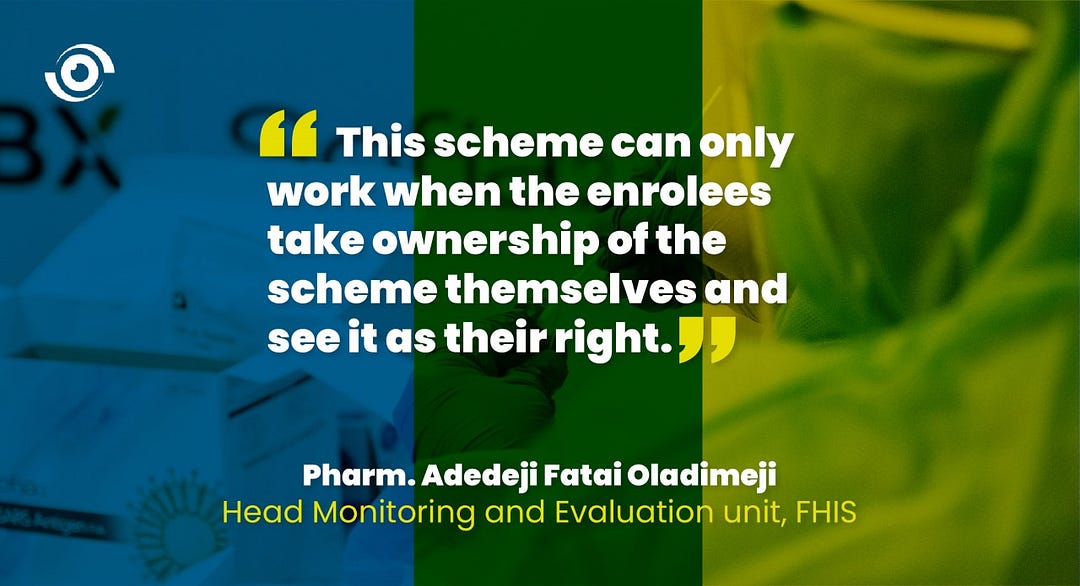“Enrolling people into insurance schemes is not easy, considering the fact that you are asking people to come and pay for health when they are not sick” — Dr Ahmed Danfulani, Director/CEO FCT Health Insurance Scheme.
Each country’s journey towards Universal Health Coverage (UHC) is very context specific and requires strategies that address the unique challenges posed by factors in that region. The National Health Insurance Scheme is Nigeria’s vehicle for the achievement of UHC. However, only about 5% of the population has been covered since its establishment in 2005, mostly in the formal sector. When the National Health Act 2014 mandated states to set up their own social health insurance schemes, it was intended to help speed up Nigeria’s journey towards achieving UHC by 2030. Since then, 34 states and the FCT have set up their schemes, with the remaining two states having passed the required legislation to begin the process.
The success of these schemes is varied, with most enrolees being in the formal sector. Given the structure and predictability of the formal and organised private sectors in Nigeria it was relatively easier to set up health insurance mechanisms, compared to the informal sector where yearly premiums must be paid out of enrolees own volition. It has, therefore, been a challenge getting this informal sector, “the missing middle” in Nigeria’s journey towards achieving UHC, enrolled. This has been further compounded by the fact that health insurance is not yet mandated by law in Nigeria.

The Federal Capital Territory Health Insurance Scheme
When the Federal Capital Territory Health Insurance Scheme (FHIS) was first set up back in 2009, it was mainly for the formal sector, namely staff of the Federal Capital Territory Administration (FCTA), Area Councils and Local Education Authorities (LEA). While the scheme had paid for access to health insurance for all staff, not all of them registered or used it, leaving about 40% of the eligible uncovered and the Area Councils left out. With the advent of new leadership in 2018, there was a renewed drive to enrol beneficiaries. Through sensitisation and awareness campaigns, over 90% of FCTA staff and 50% of the Area Councils are now covered, with plans in place to enrol the LEAs, according to Dr Aminat Zakari, Head of Operations, FHIS.
The FHIS stratified its health insurance packages into formal and informal sectors. The formal sector includes the organised private sector, i.e., organisations with more than 10 employees, and the informal sector consists of individuals, small and medium scale enterprises, etc. The formal sector package, paid for by the employer and deducted at source, covers the enrolee, his/her spouse and four children and allows for additional enrolees to be added based on a negotiated premium. Whereas for the informal sector, premiums are paid per life, at N13,500 per year. The scheme has enrolled about 130,000 lives so far, in both the formal (over 90%) and informal sectors (less than 10%).

Reaching the informal sector
Following the assent of the FHIS Act of 2020, a plethora of activities were planned with the aim of raising awareness, educating the public and improving community perception of health insurance among the informal sector in the Federal Capital Territory (FCT) and its six Area Councils. Research was conducted to determine what the target population would respond to; sensitisation drives were conducted in markets and schools and communities; premiums were reduced for retirees (to N12,000); and a partnership was entered into with the FCT Microfinance bank which enabled them to pay enrolee premiums upfront, allowing enrolees to pay back piecemeal at very low interest rates. According to the FHIS Public Relations Officer, David Barau, the sensitisation drives to major markets in Abuja were so successful that the scheme has been invited to set up enrolment centres in the markets, so that potential enrolees can easily access them.
The FHIS has Area Council coordinators who conduct advocacy visits to traditional, religious, and community leaders, who then educate their communities on the benefits of health insurance. They partner with the National Orientation Agency (NOA) to sensitise the public on the FHIS, and recruit beneficiaries to be ambassadors of the scheme to their communities. They also engage consultants to target key groups, such as road transport workers.

The Scheme also deployed multimedia strategies, including a radio show called, ‘FHIS & You’ which was aired in five languages — Yoruba, Igbo, Hausa, Gbagyi and Pidgin. They used social media (Twitter and Facebook), billboards, posters, handbills and banners, and a quarterly bulletin, to share updates with enrolees. To boost visibility and beneficiary relationship, a call centre was set up in the city centre. It opens from 8 am to 8 pm every day and anyone can walk in to enquire about the scheme and get enrolled. There is also an online enrolment platform.
The FHIS benefits from the Basic Health Care Provision Fund (BHCPF) under which they have enrolled 9,000 lives (37.5% of their target) among the poor and vulnerable, said Dr Ahmed Danfulani, Director/CEO of the FCT Health Insurance Scheme.
Have these strategies worked?
While there was some traction in terms of enrolment when the campaign began, progress has been significantly slowed by the COVID-19 pandemic. Restrictions on movement and gatherings brought on by the pandemic meant that sensitisation activities could not be conducted as planned. Funding allocated to awareness creation and sensitisation is also inadequate. According to Dr Danfulani, the delay in the passage of legislation to make health insurance mandatory is also a major hindrance to their progress. Although the Senate passed the bill back in 2020, there has been no known progress on enacting it.

What about current beneficiaries?
Mrs Eguator Nwanneka Faith is a beneficiary of the FHIS and she said, “It is very encouraging for civil servants to be part of it. It is a very nice scheme”. She, however, is not pleased by the fact that enrolees still have to pay 10% of the cost of services under the scheme.
Another beneficiary, Abubakar Ndahi, criticised the poor quality of care he receives at hospitals under the scheme, with long wait times and poor client relations top on his list. This is a limitation that the FHIS is acutely aware of. According to the Head of Monitoring and Evaluation unit at the Scheme, Pharm Adedeji Fatai Oladimeji, there is a lot to be done to improve quality of care at the health facilities, as even these health care providers have the wrong perception of health insurance and tend to avoid providing care to enrolees because they don’t pay out of pocket. To resolve this, his unit has delisted facilities that persistently deny service to enrolees, and they are prepared to continue doing so.

What comes next?
The FHIS, along with other social health insurance schemes are on a long and arduous road to UHC by 2030, due to the massive, largely unenrolled informal sector in Nigeria. To improve insurance rates in this group, the NHIS and SSHIAs need to develop and implement innovative, evidence-based strategies specific to their context in addition to holding health facilities accountable in delivering quality health services.
According to Dr Danfulani, the FHIS looks forward to rejuvenating its sensitisation drive by boosting its already proven strategies and hopes that innovative funding mechanisms from state governments and the private sector can add to the already existing federal government initiatives such as the BHCPF, to make it possible.


Recent Comments